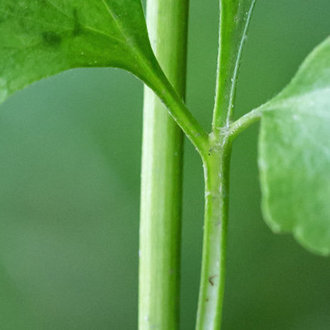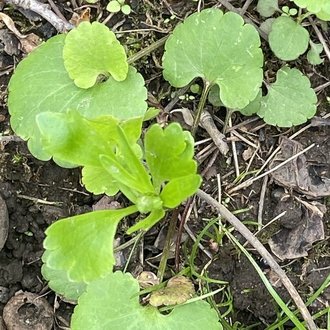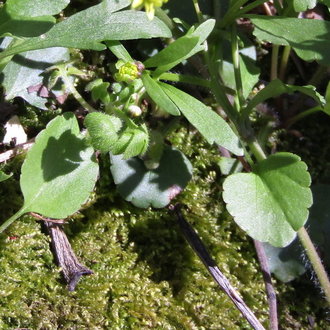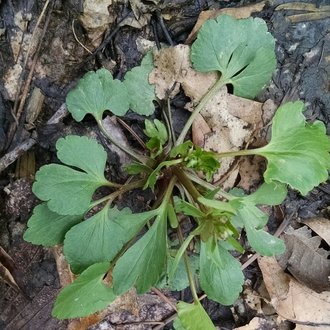Small-Flowered Buttercup vs Rock Buttercup
This guide is under construction and has not been published yet. It may have errors. When in doubt, double-check other sources for definitive ID.These two species are very similar and may be difficult to distinguish where their ranges overlap, and identification is compounded by the high level of variability of leaf shape in both species. They can usually be told apart by the pubescence on the stems, relative shininess of the seeds, and sometimes by subtle differences in leaf shape. There is also a difference in pubescence on the flower receptacles but this is not as readily visible. Ranunculus abortivus has a much broader range and is much more common in most areas of overlapping range; although both can occur in disturbed habitats or intact natural areas, Ranunculus micranthus is relatively more likely in intact natural habitats. If digging the plants up, their root systems also differ, with R. micranthus having some roots that are thickened and tuberous at the base.
Small-Flowered Buttercup (Ranunculus abortivus) | Rock Buttercup (Ranunculus micranthus) |
An inconspicuous but widespread and common flower, a biennial or short-lived perennial. | An uncommon biennial to short-lived perennial with inconspicuous flowers; often found in rocky, moist habitats, often calcium-rich ones. |
Stems usually glabrous (hairless.) Foliage may occasionally have some pubescence. Photo © Bill Keim, CC BY 4.0. | Stems villous (covered in long, soft hairs.) Photo © Shaun Pogacnik, Public Domain. |
Basal leaves are often kidney-shaped and frequently have cordate (heart-shaped) bases. Photo © Sandy Wolkenberg, CC BY 4.0. | Basal leaves only rarely have cordate bases; bases usually truncate to cuneate. Photo © Annabelle Dempsey, CC BY 4.0. |
Basal leaves usually simple, although they may be lobed; only occasionally do the lobes cut deep enough to separate the leaf into leaflets. Basal leaves may be smaller, but commonly reach to 6cm wide, occasionally wider. Photo © Ira Gershenhorn, Public Domain. | Basal leaves may be simple but are also frequently divided into three leaflets. Basal leaves rarely more than 2.5cm wide. Photo © Shaun Pogacnik, Public Domain. |
Surface of seeds are shiny. Photo © Bill Keim, CC BY 4.0. | Surface of seeds is duller. Photo © Jamie Christie, CC BY-SA 4.0. |
References & External Resources
These short lists show only links helpful for ID. For a complete list of references and resources also covering other aspects of ecology, visit the links section of the full article on each plant, which is the first entry here.










